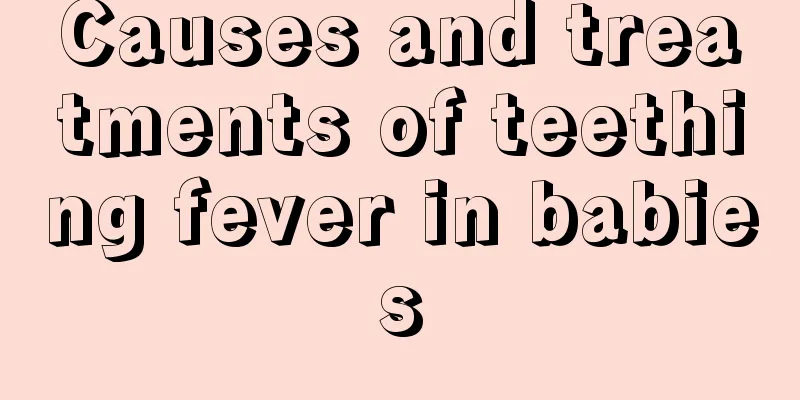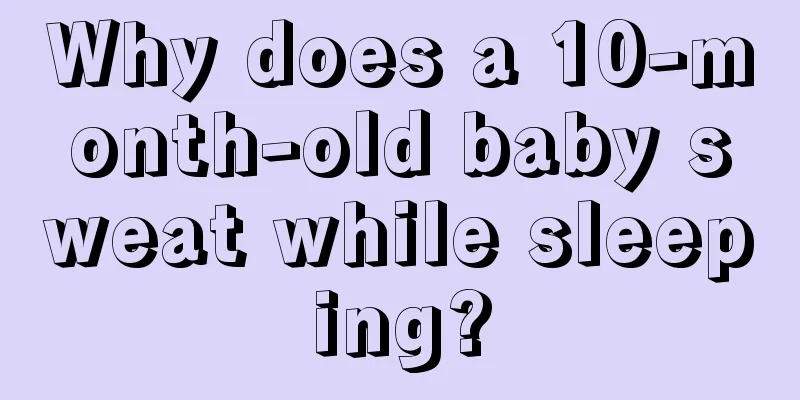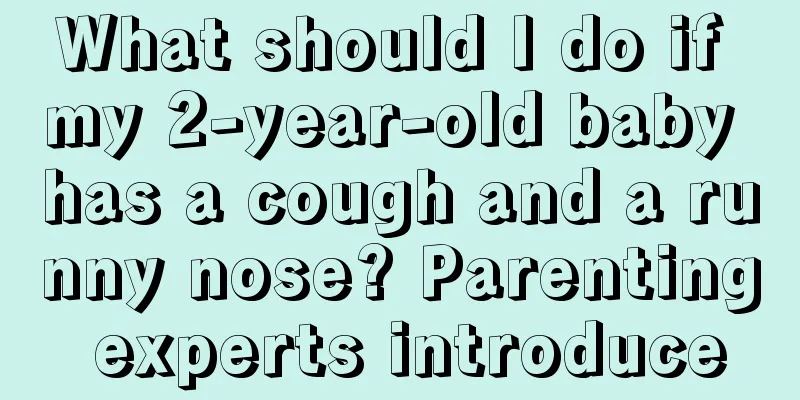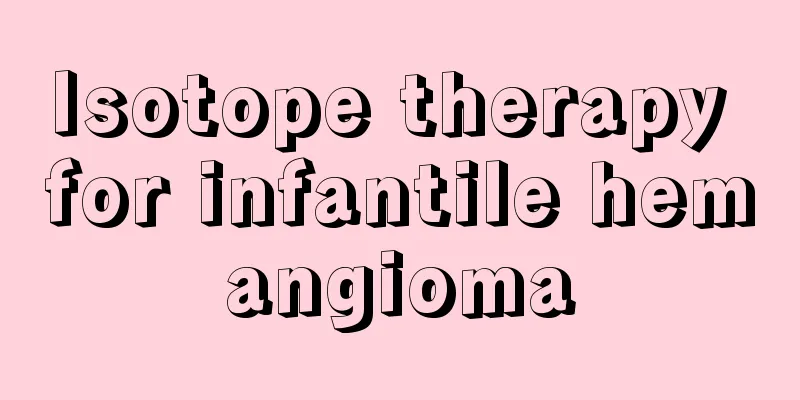Causes and treatments of teething fever in babies

|
Some parents believe that teething can cause colds, diarrhea and fever. In fact, these diseases are caused by germs (bacteria and viruses), not because of teething. Generally speaking. Teething can only produce teeth and nothing else. If your child has a fever or appears ill, do not mistake it for teething. Now I will introduce to you the causes and treatments of baby's fever. reason: 1. cold Both common cold and influenza are the most common diseases in babies. Both bacterial and viral infections are possible. The symptoms vary, including fever, loss of appetite, gastrointestinal discomfort, diarrhea, and ear, nose and throat problems. The doctor will give you "symptomatic treatment" drugs, and if you want to rest more and drink plenty of water, you will usually recover in 3 to 5 days. However, if not properly cared for, complications such as otitis media, encephalitis, meningitis, etc. may occur, and there is a risk of high fever above 39°C. 2. Ear, nose and throat inflammation Ear, nose and throat problems usually cause inflammation, which leads to redness and swelling. It is a viral infection. Symptoms vary, common ones include fever, cough, runny nose, red and swollen throat (babies are usually unwilling to eat), etc. The doctor will give you "symptomatic treatment" drugs, and if you want to rest more and drink plenty of water, you will usually recover in 3 to 5 days. The disease is prone to complications such as otitis media, atopic otitis, pneumonia, etc., and there is also a risk of high fever above 39°C. 3. Roseola It is named after the roseola virus infection. Babies around 1 year old are most likely to get it. The typical symptoms are unexplained high fever (above 39°C) that lasts about 3 to 4 days, followed by a rash (the fever will subside at this time). The rash usually disappears slowly without leaving any scars or other complications, so parents do not need to worry. 4. Vaccination Many babies have mild fevers due to vaccinations, but more obvious fevers usually occur after the injection of the "diphtheria, whooping cough, and tetanus" vaccine. If you are unwell or have a cold, it is not suitable to take your baby for vaccination to avoid confusion about the symptoms. The observation period for fever caused by vaccination is 72 hours. If it exceeds this period, the fever is no longer caused by the vaccine, and parents need to make another judgment. Treatment: 1. Maintain air circulation in the home: If the home has air conditioning, maintain the room temperature between 25℃-27℃. You can place your baby in an air-conditioned room or use an electric fan to blow around him to slowly lower his body temperature and make him feel more comfortable. But if the limbs are cold and the patient is shivering violently, it means that the patient needs warmth, so cover him with a blanket. But parents must remember that they must not let their babies face the air conditioner or electric fan to cool down. 2. Take off too many clothes: If the baby's limbs and hands and feet are warm and the whole body is sweating, it means that the baby needs to dissipate heat, so he can wear fewer clothes. 3. Warm water bath: Undress the baby and rub the whole body with a warm water (37℃) towel. This will dilate the blood vessels in the baby's skin and release body qi. In addition, when water vapor evaporates from the body surface, it will also absorb body heat. 4. Use a cooling patch: It helps dissipate heat, but it is not recommended for younger babies. The above introduces the causes and treatments of baby's teething fever. In daily life, parents should still pay attention to the cultivation of their children's reasonable and healthy eating and living habits. It is also very important to maintain a positive attitude. Hopefully these methods will be effective for the children. These are just textual explanations. If you have any questions, be sure to seek medical attention immediately. Don't delay the child. |
<<: Diet therapy for babies with colds and coughs
>>: At what age should children start brushing their teeth?
Recommend
What are the medicines for treating diarrhea in children?
Diarrhea is one of the common diseases in life. M...
What should I pay attention to when my child changes his teeth?
Children usually start to change their teeth when...
Child blowing bubbles
When a newborn baby is born, parents begin to tak...
Treatment of baby's red bottom
We have seen many babies with red buttocks. Most ...
What to do if your child has roundworms in his stomach
It is normal for children to have roundworms in t...
Knowledge about bronchiolitis
Bronchiolitis is a common disease among children,...
What causes dry cough without sputum in children?
Dry cough is a very painful thing. If a child has...
Why does a two-year-old baby snore when sleeping?
My two-year-old baby snores when he sleeps, and i...
Ten-month-old baby has developmental delay
We all know that what mothers are most concerned ...
Symptoms of fever in newborns
The physical health of newborns is the most conce...
The jaundice of the newborn has not subsided after 17 days?
After every baby is born, parents hope that the c...
Irregular heartbeat in children
Arrhythmia is also very common in children. If yo...
Is it ok for babies to eat pig bone marrow?
Pig bone marrow is a relatively important substan...
Symptoms of hip dislocation in 2-year-old baby
The hip joint is mainly located at the junction o...
How to treat ringworm in children?
A lot of bubbles suddenly appeared on the child&#...









